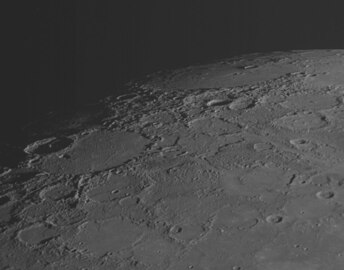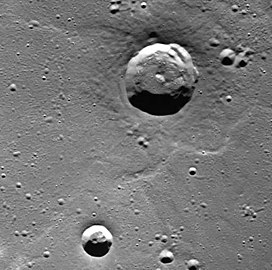 MESSENGER WAC mosaic | |
| Planet | Mercury |
|---|---|
| Coordinates | 70°19′N257°41′W / 70.31°N 257.68°W |
| Quadrangle | Borealis |
| Diameter | 291 km (181 mi) |
| Eponym | Jakob Ludwig Felix Mendelssohn |
Mendelssohn is a crater on Mercury. Its name was adopted by the International Astronomical Union (IAU) on April 24, 2012. Mendelssohn is named for the German composer Jakob Ludwig Felix Mendelssohn. [1]
The floor of Mendelssohn is covered by smooth plains materials which are created by extrusive volcanism. [2]
A confirmed dark spot is present in north-central Mendelssohn, around a crater of 19 km diameter. The crater excavated low reflectance material (LRM). [3] Hollows are present within the crater.
On the east rim of Mendelssohn is the crater Berry.



